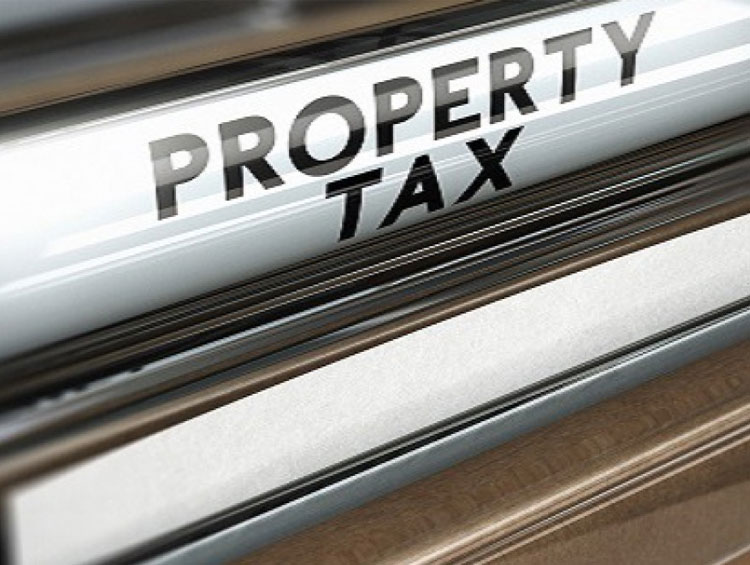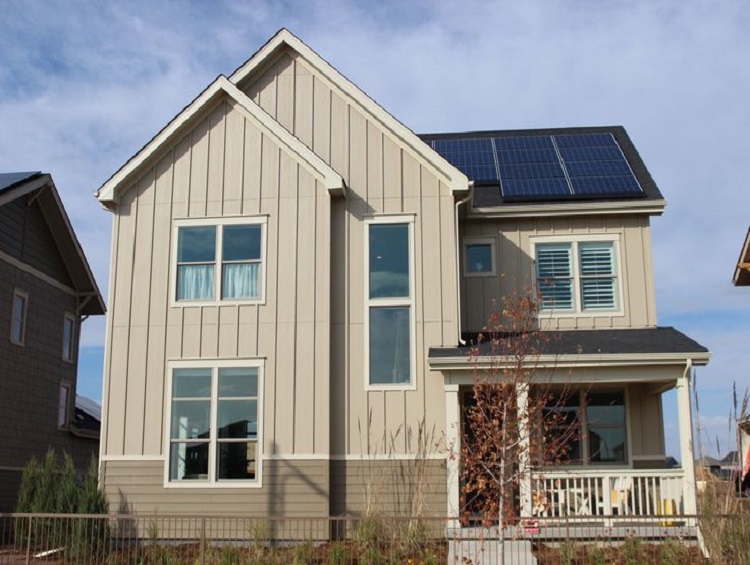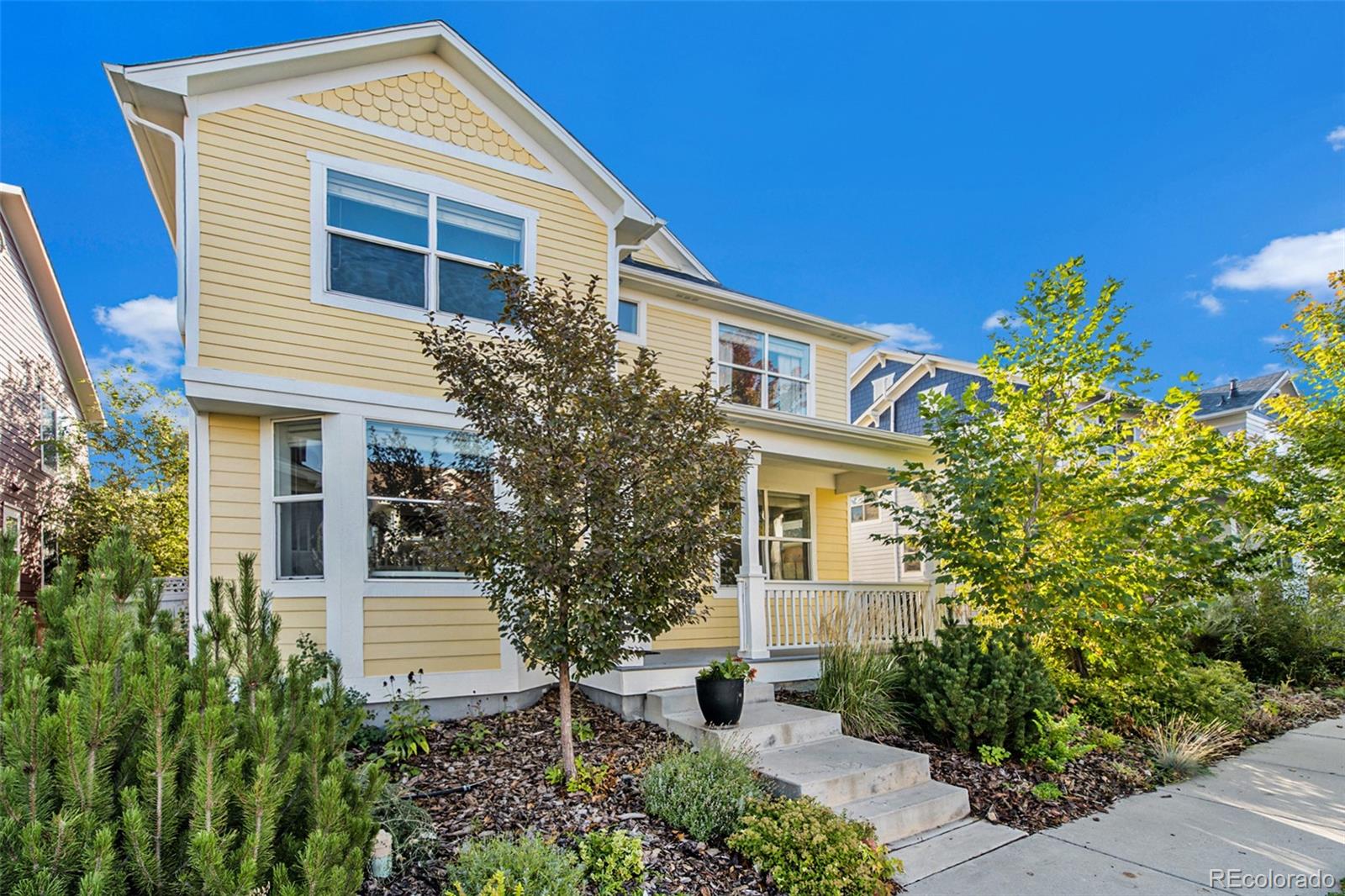When I work with home buyers in the Central Park (formerly Stapleton) area property taxes are typically part of the conversation. The taxes are higher than other Denver areas and I want buyers to understand why. Buyers understandably want to know why because it obviously affects their buying power and their monthly budget. So the purpose of this post is to explain why Stapleton taxes are higher and also shed some light on some of the other common Stapleton tax-related questions that I hear often. (if you are just looking for a quick rule of thumb on what the property taxes will cost you on a monthly basis it’s roughly 1.1% of the purchase price divided by 12 months. For example, a $500k house will be $5,500 in annual tax which is $458 per month)
Why are Central Park’s taxes higher than other Denver neighborhoods?
I’ll explain why our Central Park taxes are higher using an example that shows how property taxes are calculated on a fictional Denver home that isn’t in Central Park then I’ll calculate those sames taxes as if it were in the neighborhood. The comparison helps bring to light why our taxes are higher. Let’s assume for the example that the home is worth $225,000.
Denver uses the following formula to calculate property taxes on a property:
Actual Value X Assessment Rate X Mill Rate (Tax Rate) = Total Property Taxes
So in our example we know Actual Value is $225,000 (as determined by County Assessor not homeowner). The Assessment Rate determines how much of the Actual Value will be taxed, and at this time it’s 7.96% as determined by State Legislature. The last part of the formula is the Mill Rate. Denver’s combined general millage or Mill Rate was 84.071 mills or a tax rate of $0.084071 for every $1 of assessed value. This Mill Rate of 84.07 is the total of the Mills for the School General Fund (39.575 mills), Denver General Fund (10.91 Mills), Police Pension (1.893 Mills), etc. So in essence, the Mills show what the taxes are allocated towards; which are items that benefit the general public such as schools, police, firemen, drainage, capital maintenance,etc. Everyone should chip in towards these items cause they benefit all of us so it makes sense. So now we have all the factors in our equation to come up with our tax rate in the example as follows:
Actual Value $225,000 X Assessment Rate .0796 X Mill Rate .08407 = Total Taxes of $1,505.71
So now let’s look at that same example except let’s assume the house is now located in Central Park. The Actual Value part of the equations stays the same at $225,000. The Assessment Rate stays the same at 7.96%. The only part of the equation that changes is the Mill Rate is no longer 84.07, it’s now 139.382. What happened, why is Central Park ‘s Mill Rate 55.311 Mills higher than Denver in general? The difference of 55.311 is the Mill Rate levied on Central Park homes by the Westerly Creek Metropolitan District (“WCMD”). This is the key to why our taxes are higher. The WCMD is the entity that is authorized to collect property taxes in Central Park to fund the development of infrastructure in the Central Park area. For example, these taxes go towards local streets, alleys, neighborhood parks, pools and playgrounds. These are amenities that we enjoy in the area that aren’t often used by those who don’t live here…so it makes sense that we pay for them. There is no other difference between the Central Park homeowners tax bill and the tax bill of a typical Denver resident that is not in such a metro district. (By the way, when you purchase a home in Central Park it shows on the title work that the property you are buying is in the WCMD which is how they have the power to tax your property more without asking you) So here is the actual formula for the Central Park home from our example:
Actual Value $225,000 X Assessment Rate .0796 X Mill Rate .139382 = Total Taxes of $2,496.33
So when you compare the two tax amounts on the same house you see that the home outside of Central Park pays only 60% of what the Central Park resident pays. ($1,505.71 in typical Denver neighborhood compared to $2,496.33 for that same house in Central Park)
So is this fair? I think so. It’s a free market and we chose to live in Central Park and part of that choice is accepting that you’re going to have to pay more in taxes to live in an area with all the amenities listed above. Sure you could get more house for your money if you purchase outside of Central Park but personally I think the community aspect of Central Park (which is supported/created by the amenities) is well worth it. Our kids couldn’t be out on the mews (similar to pocket park) playing with their neighbor friends each evening if we didn’t pay these taxes and that has personally been my favorite thing about living in Central Park. To each his own though, it’s not for everyone and I work with plenty of buyers who chose to purchase elsewhere which is completely fine.
That explains the Westerly Creek Metro District, but I’ve read that there are up to three metro districts in Central Park. What are the other two and what is their role?
The Westerly Creek Metro District (“WCMD”) is the main metro district and it’s the only one you’ll see on your property tax bill on your Central Park home. The “Park Creek Metro District” is one of the other ones you may hear about from time to time. It’s role is not to collect taxes but to execute on the building of the infrastructure using the WCMD funds. It doesn’t tax you. The third metro district is the “Central Park Metro District”. This is the old metro district and it no longer does anything from my understanding. It was the predecessor to the Park Creek Metro District. No taxes are collected by this entity.
I heard Central Park is funded by “TIF financing”…what is TIF Financing and is it part of the reason my taxes are higher?
“TIF” Financing is a source of confusion so I wanted to clarify how it works. “TIF” stands for tax increment financing and it’s a way for infrastructure development to be funded (so an area such as Central Park can be built out) using future incremental increases in sales and property taxes. Things that are funded with TIF funds are items such as trunk infrastructure like Central Park, regional streets like MLK Blvd, Central Park Blvd, and regional open spaces like Westerly Creek. Bonds are sold at the beginning of the development and then the bond proceeds are what fund the infrastructure development which allows homes and businesses to be built which increases the property values. The incremental increase in property taxes and sales taxes from the area is what is then used to pay back those initial bonds that funded the development.
The concept made sense to me but it wasn’t clear how my taxes were going towards this TIF financing because if you look at your Central Park tax bill you see where all the money goes (remember that mill breakdown I discussed earlier) including the Westerly Creek Metro District but you don’t see any money going to “TIF”. So I explored this a bit and even though your property taxes don’t show it the money that Denver collects for property taxes is forwarded to “DURA” (Denver Urban Renewal Authority) who pays back the bonds using the money and also allocated money towards all those other expenses such as police, fireman, schools, etc. In essence, DURA makes sure that the TIF is handled properly and the bonds are paid back. This all happens behind the scenes though, you don’t see it on your tax bill.
So does the TIF make your property taxes higher than any other Denver neighborhoods? The answer is no, they don’t. You pay the same tax as everyone else (except for WCMD as I explained above) it’s just that your taxes go to DURA who doles out the money as appropriate to make sure the TIF bonds are paid back.
The TIF period is 25 years total and then it ends, DURA is out of the middle and all taxes go to the City of Denver.
When you look at the WCMD increased mills we pay and the TIF financing it makes sense to me. The WCMD, (which Central Park residents pay more for) funds items that really just benefit us such as your local street, alley and pocket park. The TIF (which Central Park residents don’t pay more for) funds items that all Denver residents can enjoy like Central Park or Westerly Creek.
Well that’s it for property taxes in Central Park. If you made it this far I congratulate you…I fell asleep a long time ago! I hope this post helps clear things up for you if you were curious about our tax situation. It took some digging to find this information so thanks to City Councilman Chris Herndon and the Central Park Development Corp for providing information. I’m not the authority on taxes so if you notice anything within the post that’s incorrect or could be explained better I’d love to hear about it.
If you have other questions about Central Park please let me know, I’d love to help!
By the way, if this tax thing still makes no sense to you the Front Porch newspaper just did two articles on it too:
First Article On Central Park Taxes in Front Porch Newspaper
Second Article On Central Park Taxes in Front Porch Newspaper





7 Comments
Ali
If you are interested in topic: earn online cash zip bag – you should
read about Bucksflooder first
Jim
I appreciate the post. I really do. But I question where all the money is going. We pay a HOA that includes alley maintanance, another HOA that is supposed to go toward parks. We pay to belong to the pools as well. Then I pay extra taxes for the “pocket parks” you keep bringig up? Not to be rude, but these parks sould be borderline amusement parks and they’re far from it. They also cost very very little to maintain once built. When we lived in Houston our property taxes were this high, but that was because there was no state income tax. I don’t know everything, but the numbers don’t simply add up when you look at what we are all paying + the number mass of homes in the neighborhood. It doesn’t equal the cost of streets, alleys, pools and pocket parks. Also throw in the fact that we all pay different HOAs contributing to these, as well as memberships.
Jon
You would also think if there are more and more homes being built in the Stapleton community the rate would go down but it has not. With the boom in home values one would also think you would have a surplus of funds since it is not costing the WCMD that much more than it did 3 years ago to maintain these areas.
rob
Once the infrastructure of Stapleton is completely built out, will will the increased mill from WCMD go away?
DW
Yup feels like slavery we pay state and city tax for all of the above already not to mention all the tax on pot money the state and city collects for Denver schools police fire etc this is multi layered political scheme it’s like Washington moves in
Sarah brady
👍👍. I agree
Central Park Resident
Following….!
Sadly, seems like the editor/owner of this website doesn’t read this but I am 100% with you right there. If there are 2 HOA fees, then what the hell is going on with paying TWICE the tax rate as the rest of Denver. And he mentions that it is the only Neighborhood that this happens? I am sure there are tons of other neighborhood around Denver Metro that have parks and pools. Are they all paying 2 times more? The fact that Central Park is “cool” and you should be proud to live here doesn’t mean that you should just bend over and let them charge you whatever and just take it as “well it’s because we have lots of parks and pools”, yes I get it, we do! But we also pay HOA fees.. so, it is almost ridiculously expensive, borderline robbery!
Comments are closed.